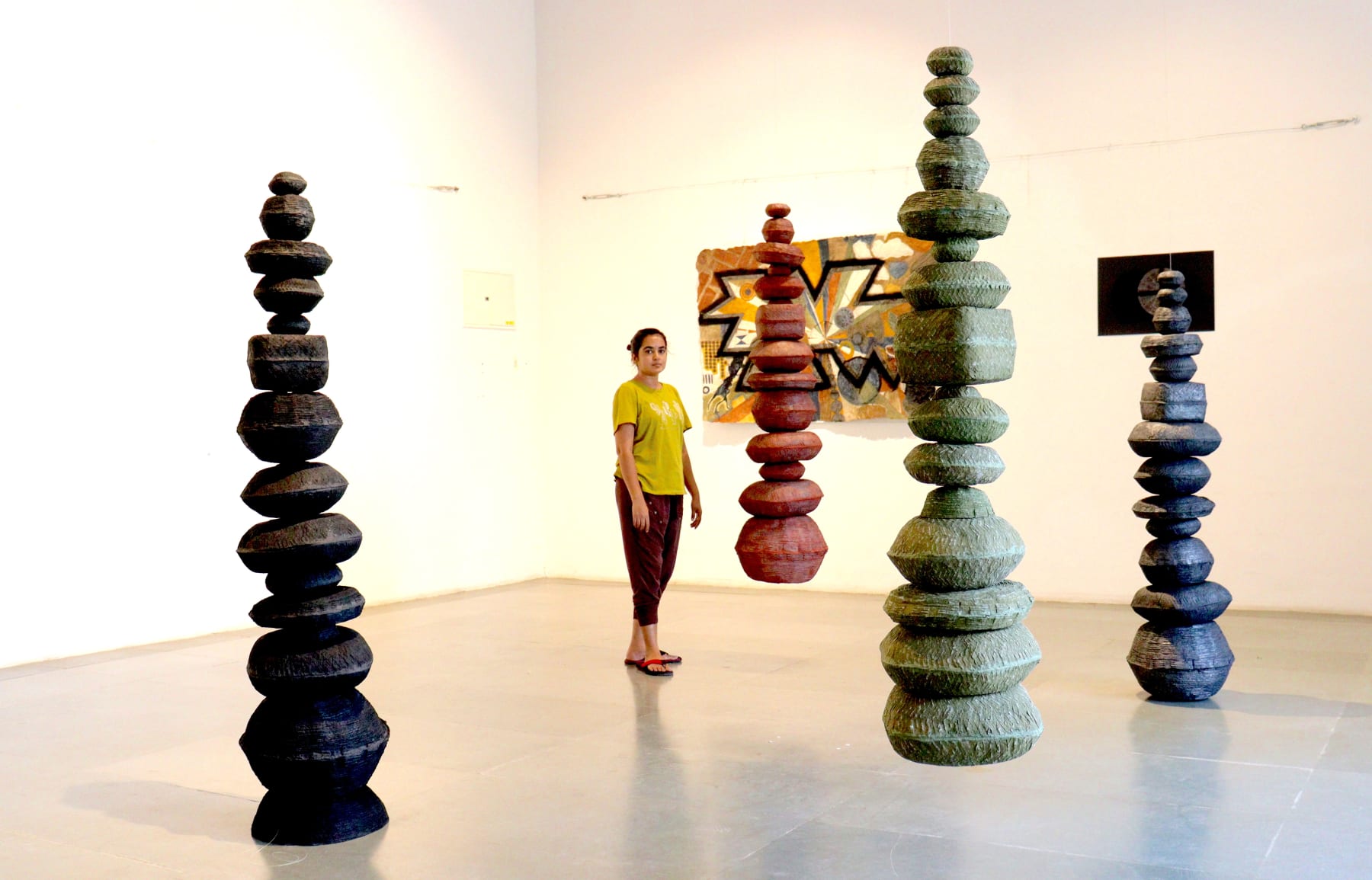Dinar Sultana
Acquired by Iram Sultan for Munjal family, Delhi
Being born in a small, rural district in the eastern part of Bangladesh, my childhood can be narrated as episodes outlined by
rigorous discipline and control.
When I came to Santiniketan as a student, the picturesque town both nourished me, when I was caught in the rapture of
independence, and also challenged me, when I received the news of my mother’s untimely demise; followed closely by the loss of another loved one. For a while, in nature I saw but a vast sea of emptiness. I reconciled my own loss with what I saw in nature; how its remnants are not lost but quite simply reborn.
I do not paint; I quite simply make. The fleeting ephemeralities of nature have long since fascinated me. I have adopted an almost archival, quasi-scientific method of categorising and documenting various hues, textures, surfaces found in nature, all in pursuit of understanding its materiality. Oftentimes engaging in a play of absurdity, I have also used cotton-pulp, human-hair, snake-skin and a slew of other discarded ephemerals. I then began creating my own paper from scratch, using pastes of flower-based pulp and extracting colour from elements such as flower, bark, seed, leaf, sometimes stone and clay.
Passing through many stages of explorations, my work is now attuned to the present scenario of Bangladesh. The political
conditions around me, with people turning into monsters in an environment no longer impinged by the discipline of morality.
Farmers are no longer able to sustain themselves; coal politics divide the land at large. I now link my art to local traditions of craft, the role of labour in making art, signalling the fading tradition of the region.
In my new series inspired by the Philosophy of the Book "Grunch of Giants" by the polymath futurist R. Buckminster Fuller, my
artworks present complex yet compelling ideas which touch on varied concepts. From cosmological philosophy, space, planets and stars, to imaginative cartography, and to very mundane yet pressing issues of income and resource inequality and mutual global cooperation, I also draw from and combine his iconic ideas of “Dymaxion World Map” and “Spaceship Earth” into an amalgamation of my own imagination, his quasi-utopian ideal of a cooperative, egalitarian world society. I use motifs from craft—"kantha" and "terracotta" — while the rawness of carbon graphite and charcoal signals both the political and the void.
Dinar Sultana
